Scroll Down



Reading is more than just blending- sounding out words; it is a process that allows one to gain knowledge, comprehend, analyze, synthesis, to apply knowledge, and visualize/imagine. It is a thinking process, drawing on background information to construct new meaning. It involves an interaction between what we already know and the author’s ideas. Phonics only gives an approximate pronunciation. It can be taught systematically and explicitly without a commercial program.
















Syllable Patterns:
Phonetic Rules for Spelling- rules should be pointed out to highlight a spelling pattern, but children should not be asked to memorize or recite them. Tell the students that there are exceptions to every rule so make sure to include usually. Every syllable has a vowel sound.
1. Vowel Rule 1: When there is only one vowel in a word or syllable and the vowel comes between two consonants, the vowel is usually short.
ex. back, fed, gun, cut, fig
2. Vowel Rule 2: When there is only one vowel in a word or syllable and the vowel comes at the beginning of the word, the vowel is usually short.
ex: egg, off, it, add, us
3. Vowel Rule 3: When there are two vowels in a word or syllable, the first vowel is usually long and the second is silent. "When 2 vowels go walking, the first one does the talking."
ex: maid, hear, cute, coat, tied
4. Vowel Rule 4: When there is only one vowel in a word or syllable and the vowel comes at the end, the vowel is usually long.
ex: why, no, he
5. Vowel Rule 5: When a is followed by u, w, r, ll, and lt in the same syllable, it often has the third sound of a, the Italian a.
ex: haul, pause, scar, fall, pawn, fault
6. Vowel Rule 6: When Y comes at the end of a two or more syllable word, Y has the sound of long e if the Y syllable is unaccented.
ex: funny, penny, soapy, flaky, tidy
7. Vowel Rule 7: When Y comes at the end of a two or more syllable word, Y has the sound of long i if the Y syllable is accented.
ex: defy, comply, identify, supply, multiply
8. Vowel Rule 8: When words end with the suffix -ing, -ed, or -er, the first vowel is usually short if it comes between two consonants.
ex: skinned, helper, canned, robber, shunned
9. Vowel Rule 9: When words end with the suffix -ing, -ed, or -er, the first vowel is usually long if it comes before a single consonant.
ex: tamer, noted, user, zoning, cubed,
Basic Spelling Rules
1.-ck: The /k/ sound at the end of a one syllable, short vowel word is usually spelled -ck. It is also used in two syllable words ending in -et and -le.
ex: back, flick, truck, neck, clock
ex: jacket, tickle
2. The letter c usually has the soft sound of /s/ when it comes before an e, i, or y. It has the hard sound of /k/ when it comes before an a, o, or u.
ex: city, cell, cycle
ex: come, can, cut
3. The letter g usually has the soft sound of /j/ when it comes before an e, i, or y. It has the hard sound when it comes before an a, o, or u.
ex: gym, gem, gin
ex: go, game, gun
4. FLOSS Rule: In a one syllable word double the final f, l, s, and z after a single vowel.
ex: staff, tell, miss, buzz, roll
(common exceptions: if, clef, gas, this, us, yes, bus, plus)
*Final -s sounded as /z/ is never doubled.
ex: as, is, was, has, his
5. -tch: Use -tch to spell the /ch/ sound after one short vowel at the end of a one syllable word and also in a few two syllable words.
ex: patch, itch, stretch, kitchen
(common exceptions: such, much, rich, which)
6. -dge: Use -dge to spell the /j/ sound after one short vowel on the end of a one syllable word and also in a few two syllable words.
ex: judge, bridge, dodge, gadget
7. Silent -e:
A. Silent -e on the end of a word "makes" the single vowel before it long. This is called the "magic e rule."
ex: hop-hope, can-cane, pin-pine, cut-cute
-
It makes y = /i/- type, style
-
-
Ivo P. Greif after doing a study of words ending in v/c/final e, stated that the rule is so unreliable that it is useless. See reference at the bottom of the page.
-
8. -ve: A final /v/ sound is always spelled -ve.
ex: gave, have, behave
9. -zz, -ze: A word never ends with a single z.
A. Use -zz after a short vowel.
B. Use -ze after long vowels or vowel combinations
ex: fizz, buzz, freeze, ooze
-
10.q, v, w, x, and y: These letters are never doubled.
taken in part from Professor Phonics Gives Sound Advice by Monica Foltzer, M. Ed. St. Ursula Academy 1965, 1974, 1976
Duane R. Tovey in Children’s grasp of phonics terms vs. sound - symbol relationships quotes Reid’s (1966) and Downing’s (1970) studies. “Instruction in terminology is logical but not psychological- children don’t seem to learn that way. Children cannot readily handle the abstract technical terms used by teachers.” Downing also claimed that the teaching of formal phonics rules is not only unnecessary but may cause long-term reading difficulties.
Tovey maintains that children should be encouraged and helped to make associations with phonetic elements in known words with unknown words. They should be encouraged to discover patterns. Avoid phonetic terms and emphasize the sound-symbol relationships.
1. Every syllable has one vowel sound.
2. The number of vowel sounds in a word equals the number of syllables.
home = 1 sub ject = 2 pub lish ing = 3
3. A one syllable word is never divided.
stop feet bell
-
4.Consonant blends and digraphs are never separated.
rest ing bush el reach ing
-
5.When a word has a ck or an x in it, the word is usually divided after the ck
nick el tax
6. A compound word is divided between the two words that make the compound word.
in side foot ball tooth brush
7. When two or more consonants come between two vowels in a word, it is usually divided between the first two consonants.
sis ter but ter hun gry
8. When a single consonant comes between two vowels in a word, it is usually divided after the consonant if the vowel is short.
lev er cab in hab it
9. When a single consonant comes between two vowels in a word, it is usually divided before the consonant if the vowel is long.
ba sin fe ver ma jor
10. When two vowels come together in a word, and are sounded separately, divide the word between the two vowels.
ra di o di et i de a
11. When a vowel is sounded alone in a word, it forms a syllable itself.
grad u ate a pron u nit
12. A word that has a prefix is divided between the root word and the prefix.
dis count mis fit un tie
13. When be, de, ex and re are at the beginning of a word, they make a syllable of their own.
be came de fend ex hale re main
14. A word that has a suffix is divided between the root word and the suffix.
kind ness thank ful stuff ing
15. le and the consonant before it, forms a separate syllable
pur ple fum ble mid dle
16.When –ed comes at the end of a word, it forms a syllable only when preceded by d or t.
start ed fund ed
17. When a word or syllable ends in al or el, these letters usually form the last syllable.
lev el us u al
18. The suffixes able and ible form their own syllable.
print able con vert ible
19. When ture and tion are at the end of a word, they make their own syllable.
lo tion pos ture
-
20.A word should be divided between syllables at the end of a line. The hyphen(-) stay with the syllable at the end of the line
Tip: Establish an anchor word and picture for each phonetic element. Place each element and word on a 5 1/2” by 8” and illustrate. Laminate. Have these available for a quick review of the sounds. Ask a few students each day or so to quickly give you the sound as you flash the cards. A poster of these anchor words can be posted elsewhere for reference during the day.
Phonics: knowing about letters and sounds in written words - more important for encoding (spelling) than for decoding ( reading.)
Phonics alone is like the trunk of an elephant in Seven Blind Mice by Ed Young
Phonics only helps if the words are already in one’s hearing vocabulary: reading to children from birth on, will lay the ground work for reading in general and phonics specifically. Phonics is more important for spelling than it is for decoding. Some authorities such as those who wrote the Nation of Readers recommend that phonics instruction be completed by the end of the second grade.
Phonics has its short comings. Every rule is broken at some time; e.g., I no sooner tell the children, “When there is only one vowel in the word between two consonants the vowel is usually short.” The next word invariably will be kind, find, mind, wild, or mild. I no sooner tell the children, “When two vowels come together the first vowel is usually long. The next reading invariably will have eight or grief. ea has three sounds like in eat, bread, break etc. etc. etc.
Phonics must always be balanced with meaning so when a child is reading, e.g., “Tilly and Matthew recycled the cat in the tree,” they will realize it doesn’t make sense and read, “Tilly and Matthew rescued the cat.” Before you ask a student to sound out a word, ask the students what would make sense.
Understanding of the structure of the language is very important. A noun follows a noun maker such as “a” and “the.” “He will present the present.” There is a structure to a story: a beginning, middle and end which helps the very young to to predict. A sense of structure and proper grammar develops through listening to stories
Phonic worksheets are a waste of time and money. Too often worksheets end up being a guessing game and then a memory exercise. Students need to hear the sound and practice pronouncing the word containing a specific sound.
Integrate phonics - it should be part of the reading program building on the students’ experiences. Use meaningful words- words from the text- to teach/reinforce a phonetic element. You can arrange sets of words on a transparency or poster and have them readily available for reinforcement. Highlight the phonetic element. Have the children practice pronouncing the words. Keep the lesson short. When the phonetic element is seen in their text, remind them of the sound and if apropos display the list of words on the transparency/poster.
Focus on reading, not on learning rules. Teach the children to compare new words to known words, phonetic element, or clusters they recognize or know.
Don’t overload their memory; they will blow a fuse - forget everything.
Gifted children appear to intuit words; they do not rely on phonics but they need it for writing.
Phoneme Segmenting and Blending
Some children have trouble blending. Help them unlock words through rhyming. Help them to recognize a cluster and add on to it.
Try and have the children analyze similarities in words. Isolate the sound through highlighting and guide them in forming the rule instead of just telling them the rule.
Ignore mistakes unless it changes the meaning.
“The Star” is another poem that can be used to teach a phonetic element such as the igh/ight or the ar sound. Make a copy of the poem for each student. Read the poem several times via choral reading and singing. Then give each student the same color marking pen. Have them highlight all the igh/ight words. Read all the high lighted words. On another day hand out the same poem with a different color marking pen. Reread the poem as a choral piece. Mark all the words with an ar sound etc.
For extra practice, have a list of igh/ight words placed on an transparency or from the computer or iipad, flash them on a white board.
Mrs. Friedman’s Short Vowel Book


Mrs. Friedman’s Short Vowel Book cont.
Phonics instruction should never dominate reading instruction. At least half the time devoted to reading should be spent reading connected text -stories, poems, plays, trade books etc. N o more than 25% (and possibly less) of the time should be spent on phonics instruction.Teach only the rules that are frequently used. Children should read some text daily, preferably a complete story, with phonics instruction integrated into the text reading.
Steven Stahl, The Reading Teacher april 1992


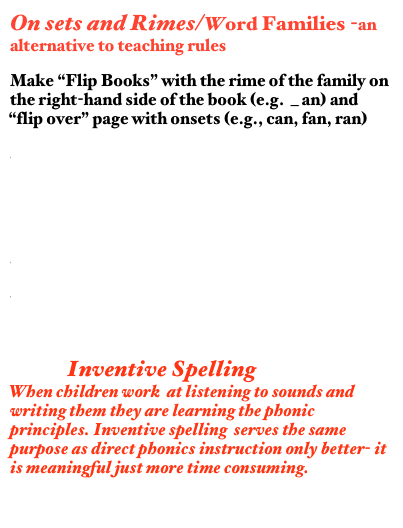






Poetry to Teach Phonemic Awareness
-
 Teaching Phonemic Awareness Using Poetry- poems included By Babs Bell Hajdusiewicz
Teaching Phonemic Awareness Using Poetry- poems included By Babs Bell Hajdusiewicz
-
 Popcorn by Helen H. Moore
Popcorn by Helen H. Moore

Phonological Awarness Activities
Comprehensive Literacy Resource for K Teachers
The following poems and lesson plans include:
-
1. “The Swing” by Robert Louis Stevenson
-
2. “The Purple Cow” by Gelett Burgess
-
3.. “My Shadow” by Robert Louis Stevenson
-
4. “Rope Rhyme” by Eloise Greenfield
5. “I Know All the Sounds the Animals Make” by Jack Prelutsky
6. “Table Manners” by Gelett Burgess
7. “Sing a Song of People” by Lois Lenski”
8. Lesson plans for each of the above poems are included in the site: Teaching Phonics Through Poetry
-
-
✤POETRY AS AN INTEGRATOR byAnna Ingham/
Daily schedule of activities includes suggestions for the week for the following poems:
The Little Seed/ magic “e”; long u
Robin in the Rain / ay; ing; 2 syllable words
Funny Man / ow; ight
Jump and Jiggle / verbs and gle words
THE STORM
Thunder Clashes
Lightening Flashes
Rain Splashes
As the storm rolls in
The loud thunder sound
The lightening touches down
The rain hits the ground
As the storm grows wild
The thunder wakes the night
The lightening so wild and bright
The rain no longer lite
As the storms is in full
The thunder no longer grim
The lightening now growing dim
The rain is getting slim
As the storm rolls on
Now the storm is done
I can almost see the sun
Boy wasn't that fun
And the storm has moved on
Cindy Burke
-
✤Intensive Decoding Instruction Does Not Contribute to Reading Comprehension by Stephen Krashen
Nine Guidelines for Exemplary Phonics Instruction
by Steven A Stahl Reading Teacher april 1992
-
1.Builds on a child’s rich concepts about how print functions.
“Letter-sound instruction makes no sense to a child who does not have an overall conception of what reading is about.”
This experience comes from being read to and observing someone writing- modeling for them.
2.Builds on a foundation of phonemic awareness- awareness of sounds in spoken words.
-
3.Is clear and direct. “Circling pictures, coloring, cutting, and pasting, and so on wastes a lot of time.”
-
4.Is integrated into a total reading program. “”Phonics instruction no matter how useful it is , should never dominate reading instruction. ..my rule of thumb is that at least half of the time devoted to reading ( and possibly more) should be spent reading connected text- stories, poems, plays, trade books, and so on. No more that 25% ( and possible less) should be spent on phonics instruction and practice....What is taught should be directly usable in children’s reading.”
-
5.Focuses on reading words, not learning rules. “Effective decoders see words not in terms of phonics rules, but in terms of patterns of letters that are used ...” Draw children’s attention to the order of letters in words and patterns. Rules can be useful to a point. Research shows that 45% of the commonly taught phonics rules worked as much as 75% of the time. Rules can be taught when studying a particular spelling pattern but children should not be asked to memorize them.
-
6.May include onsets and rimes. Have children compare an unknown word to a known word and use context to confirm their prediction.
-
7.May include invented spelling practice - learning phonics principles, but learning them “naturally.” A good substitute for direct phonics instruction.
-
8.Develops independent word recognition strategies, focusing attention on the internal structure of words. ”It is through the learning of these patterns that children learn to recognize words efficiently.”
-
9.Develops automatic word recognition skills so that students can devote their attention to comprehension, not words.” the purpose of phonics instruction is not that children learn to sound out words. The purpose is that they learn to recognize words, quickly and automatically, so that they can turn their attention to comprehension.” (Samuels, 1988) Reading is the best practice in recognizing words. Studying words in isolation is a waste of time.
-
Good phonics instruction is over quickly.- completed by the end of second grade. Spending time teaching the schwa, the silent k, assigning accent to polysyllabic words is at best a waste of time.
“Library books rather than workbooks, should be used by children not working with the teacher. Writing should be incorporated into the teaching of reading.”
“Literature, writing, and thinking are not exclusive properties of any one approach to beginning reading.”
“Some teachers overdo phonics.”
-
J.Chall in the Learning to Read: the Great Debate
The written material being pronounced must be within the listening comprehension abilities of the child.







Wylie and Durrell (1970) identified 37 high utility phonograms that can be found in almost 500 primary words. These are: ack, ail, ain ake, ale, ame, an, ank, ap, ask, at, ate, aw, ay, eat, ell, et ice, icek, ide, ight, ill, in , ine, ing, ink, ip, it, ock, oke, op, ore, ot, uck, ug, ump, unk,

-le, compound words, long i, contractions, ch, long i and e
Phonics has many short comings:
-Phonics only helps if the words are already in one’s hearing vocabulary.
-
-Every rule is broken at some time; e.g., I no sooner tell the children, “When there is only one vowel in the word and between two consonants the vowel is usually short.” The next word invariably will be kind, find, mind, wild, or mild.
-
-Phonics is a skill; readers occasionally use skills but constantly need to use strategies. For the emergent reader only the initial letter sound is needed.
-
-With so many varied speech patterns around the county, how can phonics be the primary approach to reading? There is a single spelling across dialects that pronounce words very differently. My son once stopped a Boston police officer for directions. He asked the officer to repeat it five times and finally gave up. My son couldn’t figure out what the officer was saying.
-
-“And when the rules being taught do not match the learner's own dialect, it is that much more confusing and that much harder to learn. Yet another barrier for far too many children! “
-
-How about the children with an auditory discrimination problem? They can not learn via phonics. Extra help in phonic lessons is a waste of time.
-
-There is no carry over. My grandchildren reinforced the fact that there was no carry over from what they learned in the structured phonetic approach to their reading.


“Children’s Spelling Strategies”
The Reading Teacher
Vol. 57.NO 4. Dec. 2003-Jan. 2004

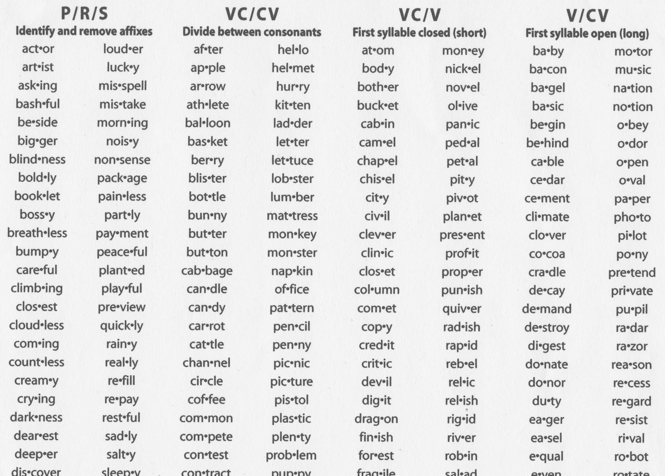




Teaching Phonics does not have to be taught in sequence. Teach phonetic skills when the text lends itself .
Phonetic Skills needed to be taught:
-
-Alliteration, Rhyme, Onsets and Rhymes
-
- Single Consonants Sounds
-
-Consonant Clusters (bl, gr, and sp)
-
-Consonant Digraphs (sh, ch, and th )
-
-Short Vowels
-
-Long Vowels
-
-Vowel or Vowel- Consonant Pairs (oo, ew, oi, and oy)
Assessing students’ decoding skills
Emergent Readers
-
-beginning consonants
-
-end consonants
-
-medial consonants
-
-consonant blends (bl, gr, sp )
-
-consonant digraphs (th, th, ch )
-
-short vowels
-
-long vowels
-
-vowel pairs (oo, ew, oi, oy )
-
Early/Fluent Readers
-
-inflected forms (-s, -es, -ed, -ing, -ly)
-
-contractions
-
-possessives
-
- compound words
-
- syllables
-
- base words
-
- root words
-
- prefixes
-
- suffixes

In a Reading First Impact Final Report, children participating in Reading First classrooms where there is an intensive, decoding-based curriculum, did not do better on tests of reading comprehension in grades one, two, and three, despite considerable extra instructional time.
The National Reading Panel: The pattern of success at decoding and failure at comprehension as a result of intensive phonics instruction was present in the foundation document for Reading First, the report of the National Reading Panel. Children trained with intensive phonics did not do significantly better on tests in which they had to understand what they read. The same goes for Direct Instruction.
The results of studies suggest that a high level of proficiency in decoding is not a preliminary step in learning to read.
Heavy Skills Instruction not Necessary
... heavy, systematic phonics instruction of the kind supplied by Reading First is not necessary. Children who have been given the opportunity to do a great deal of interesting, comprehensible reading and have less decoding instruction, perform as well as or better than children in decoding-emphasis classes on decoding tests, and typically score higher on tests that test what really counts in reading: comprehension.
Children who learned to read on their own with little or no explicit decoding instruction appear to be able to decode quite well.
In summary: Those who receive only intensive instruction in decoding do not do well on tests of reading comprehension, but those who learn to read by reading, by understanding what is on page, do well on tests of both decoding and reading comprehension.
This position does not exclude the teaching of "basic" phonics. A small amount of consciously learned knowledge of the rules of phonics can help in the beginning stages to make texts comprehensible, but there are severe limits on how much phonics can be learned and applied... The Reading First Final Report thus confirms the common-sense view that the path to reading proficiency is not through worksheets but through books and stories.

oi words synomyms contractions
Phonic Activities /More Links
-
★Storybots development of phonics
-
✤U Tube Blending Sounds Idea
-
✤UTube Onset-Rime Blending (Skip Ad)
Books/Stories Lists to Teach Phonics
Teaching phonics through poems,chants,big books, nursery rhymes, songs and literature is far more interesting and meaningful.
Angus and the Cat, Who Took the Farmer’s Hat, Sheep in the Jeep, The Cat in the Hat and all Dr. Seuss’ books...
Phonic Generalizations in Chrysanthemum
instructional plan for ow, ew, aw
Teaching Specific Individual Sounds
-
✤Sound of the Week by Lybbert 3-6 Yr. Old
The three following sites are working with oi and oy. I suggest that you don’t waste time reinforcing these two digraphs because those words usually can be decoded semantically.
-
✤Practice oi, oy - (Diphthong)/Soft School
-
✤Look,Cover,Write, Check-vowel digraphs
Ow, the “pinching vowel”
Familiar words can be read as fast as single letters. Under some conditions, words can be identified when the separate letters cannot be. Meaningful context speeds word identification. All phonics can be expected to do is help children get approximate pronunciations. Becoming a Nation of Readers p. 11
My 2 1/2 year old granddaughter revealed something amazing to me. I read her a story that her mother read to her many times-
Are You My Mother? When I got to the page with many animals, I did not read them in sequential order. I would just form my lips to indicate the first sound. Each time she could tell me what animal I was going to read by just looking at the formation of my lips.
Doesn’t it stand to reason an older child would be helped to figure out a word by just getting their mouth ready to pronounce the initial consonant or vowel as long as they are concentrating on the meaning of the story? Phonics needs to be kept in balance with syntax and semantic clues.
The following passage exemplifies the fact that phonics is only part of the decoding process. The first and last letters are correct. One must not negate the importance of syntax and semantics.
O lny srmat poelpe can raed tihs.cdnuolt blveiee taht I cluod aulaclty uesdnatnrd waht I was rdanieg. The phaonmneal pweor of the hmuan mnid, aoccdrnig to a rscheearch at Cmabrigde Uinervtisy,
it deosn't mttaer in waht oredr the ltteers in a wrod are, the olny iprmoatnt tihng is taht the frist and lsat ltteer be in the rghit pclae. The rset can be a taotl mses and you can sitll raed it wouthit a porbelm.
Tihs is bcuseae the huamn mnid deos not raed ervey lteter by istlef, but the wrod as a wlohe. Amzanig huh? yaeh and I awlyas tghuhot slpeling was ipmorantt!


















A Frickin' Elephant
Jake is five and learning to read.
He points at a picture in a zoo book and
says, "Look Mama! It's a frickin' elephant!"
Deep breath... "What did you call it?"
"It's a frickin' Elephant, Mama!
It says so on the picture!"
and so it does...
" A f r i c a n Elephant "
Hooked on phonics!
Ai n't it wonderful?
Assessments
-
★Patti’s Electronic Classroom/Phonemic Awareness Assessment Tools
-
★Phonological Awareness & Phonics -assessment plus/scroll down by Ms. Jones- an all inclusive site
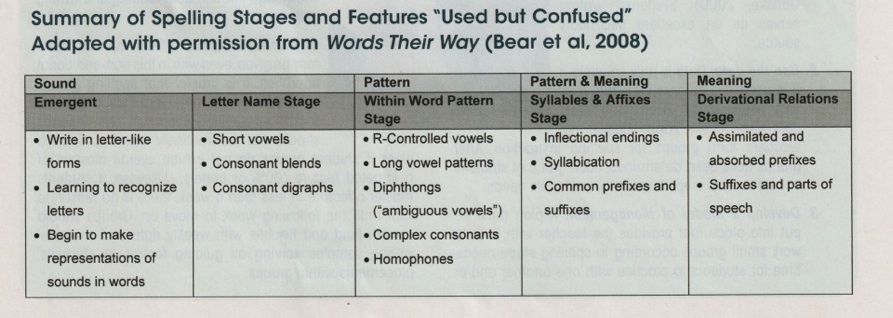
Spelling

Below are a few phonic rules that cover some problematic sounds. The ed is problematic for the second language learner. It either takes a t, as in tent, d as in mend, or ed sound as in Ed. The oo has two sounds: book/ moon.
C or G followed by an i, e, or y takes a soft sound. C/s G/j
Taken from: Professor Phonics Gives Sound Advice Copyright 1965


Over in the meadow,
Where the stream runs blue
Lived an old mother fish
And her little fishes two
"Swim!" said the mother;
"We swim!" said the two,
So they swam and they leaped
Where the stream runs blue
Sand
Author: Helen Moore
Sand in my swimsuit,
Sand in my hair.
When I go to the beach,
sand gets everywhere!
I wonder, I wonder
Oh how can there be,
Sand left at the beach
When there's so much on me?8
Wiggley Tooth
Author: Unknown
One day I had a wiggley tooth
that wouldn't do it's work.
So I tied it to a doorknob
And I pulled it with a jerk!
But since that tooth is missing,
to tell the honest truth,
My mouth feels mighty lonesome
without that wiggley tooth.
First tooth
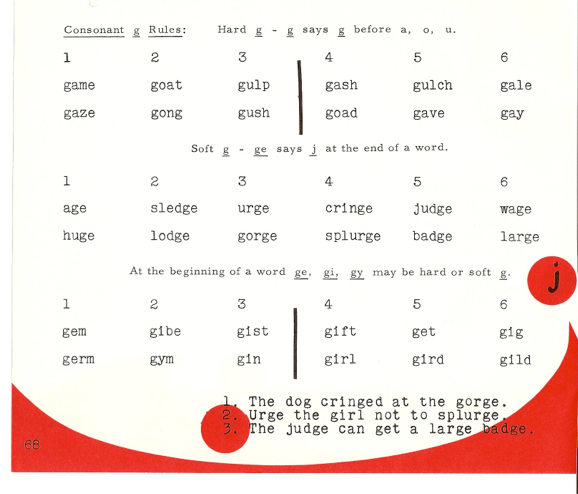
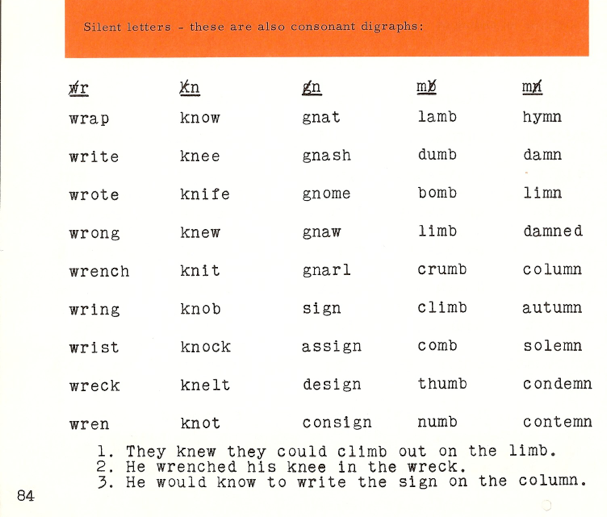

“A study of the pronunciation of words ending in a vowel-consonant-final E patten” The rule governing the pronunciation of words in this category is found by this study to be so unreliable as to be useless. Ivo P.Greif The Rdg Teacher Dec. 1980
ex. give, have, were, engine, gone, machine, one, some, ....

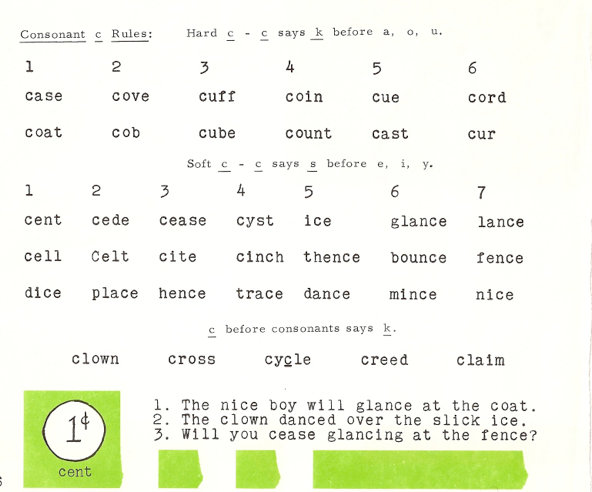


een, ene, iens, eans, eam, ine
Phonics has many short comings:
-Phonics only helps if the words are already in one’s hearing vocabulary.
-
-There is no carry over. My grandchildren reinforced the fact that there was no carry over from what they learned in the structured phonetic approach to their reading.
-
-Every rule is broken at some time; e.g., I no sooner tell the children, “When there is only one vowel in the word and between two consonants the vowel is usually short.” The next word invariably will be kind, find, mind, wild, or mild.
-
-Phonics is a skill; readers occasionally use skills but constantly need to use strategies. For the emergent reader only the initial letter sound is needed.
-
-With so many varied speech patterns around the county, how can phonics be the primary approach to reading? There is a single spelling across dialects that pronounce words very differently. My son once stopped a Boston police officer for directions. He asked the officer to repeat it five times and finally gave up. My son couldn’t figure out what the officer was saying.
-
-“And when the rules being taught do not match the learner's own dialect, it is that much more confusing and that much harder to learn. Yet another barrier for far too many children! “
-
-How about the children with an auditory discrimination problem? They can not learn via phonics. Extra help in phonic lessons is a waste of time.



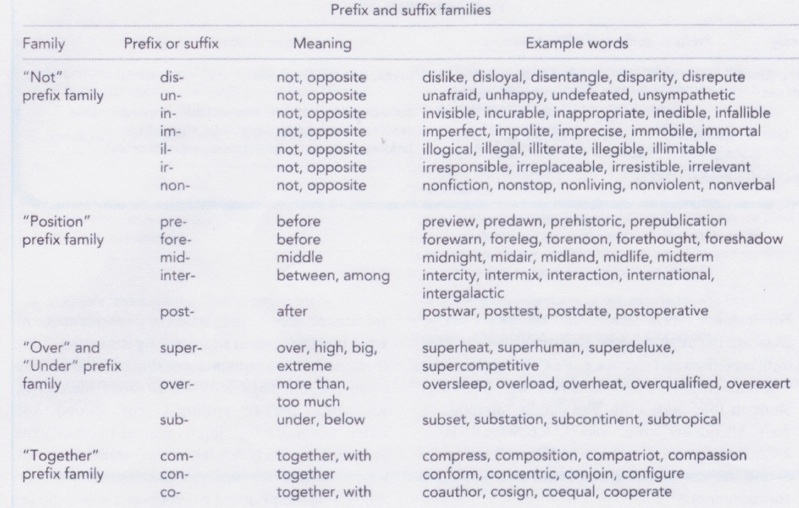



Poems for the oo as in moon sound: u-e, ui, ou, u,ue












